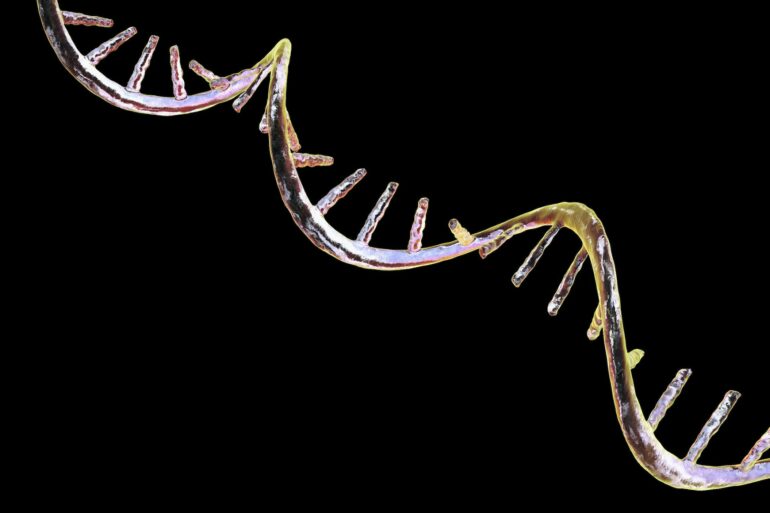The Earth formed 4.5 billion years ago, and life less than a billion years after that. Although life as we know it is dependent on four major macromolecules – DNA, RNA, proteins and lipids – only one is thought to have been present at the beginning of life: RNA.
It is no surprise that RNA likely came first. It is the only one of those major macromolecules that can both replicate itself and catalyze chemical reactions, both of which are essential for life. Like DNA, RNA is made from individual nucleotides linked into chains. Scientists initially understood that genetic information flows in one direction: DNA is transcribed into RNA, and RNA is translated into proteins. That principle is called the central dogma of molecular biology. But there are many deviations.
One major example of an exception to the central dogma is that some RNAs are never translated or coded into proteins. This fascinating diversion from the central dogma is what led me to dedicate my scientific career to understanding how it works. Indeed, research on RNA has lagged behind the other macromolecules. Although there are multiple classes of these so-called noncoding RNAs, researchers like myself have started to focus a great deal of attention on short stretches of genetic material called microRNAs and their potential to treat various diseases, including cancer.
MicroRNAs play a key role in regulating gene expression.
MicroRNAs and disease
Scientists regard microRNAs as master regulators of the genome due to their ability to bind to and alter the expression of many protein-coding RNAs. Indeed, a single microRNA can regulate anywhere from 10 to 100 protein-coding RNAs. Rather than translating DNA to proteins, they instead can bind to protein-coding RNAs to silence genes.
The reason microRNAs can regulate such a diverse pool of RNAs stems from their ability to bind to target RNAs they don’t perfectly match up with. This means a single microRNA can often regulate a pool of targets that are all involved in similar processes in the cell, leading to an enhanced response.
Because a single microRNA can regulate multiple genes, many microRNAs can contribute to disease when they become dysfunctional.
In 2002, researchers first identified the role dysfunctional microRNAs play in disease through patients with a type of blood and bone marrow cancer called chronic lymphocytic leukemia. This cancer results from the loss of two microRNAs normally involved in blocking tumor cell growth. Since then, scientists have identified over 2,000 microRNAs in people, many of which are altered in various diseases.
The field has also developed a fairly solid understanding of how microRNA dysfunction contributes to disease. Changing one microRNA can change several other genes, resulting in a plethora of alterations that can collectively reshape the cell’s physiology. For example, over half of all cancers have…
